Have you ever taken out an area of grass and added plants in its place?
I have – numerous times.
My past was filled with grass – acres and acres of it, when I worked as a horticulturist for golf courses. Nothing made me happier then when areas of grass were being removed and I was able to design a new landscape area.
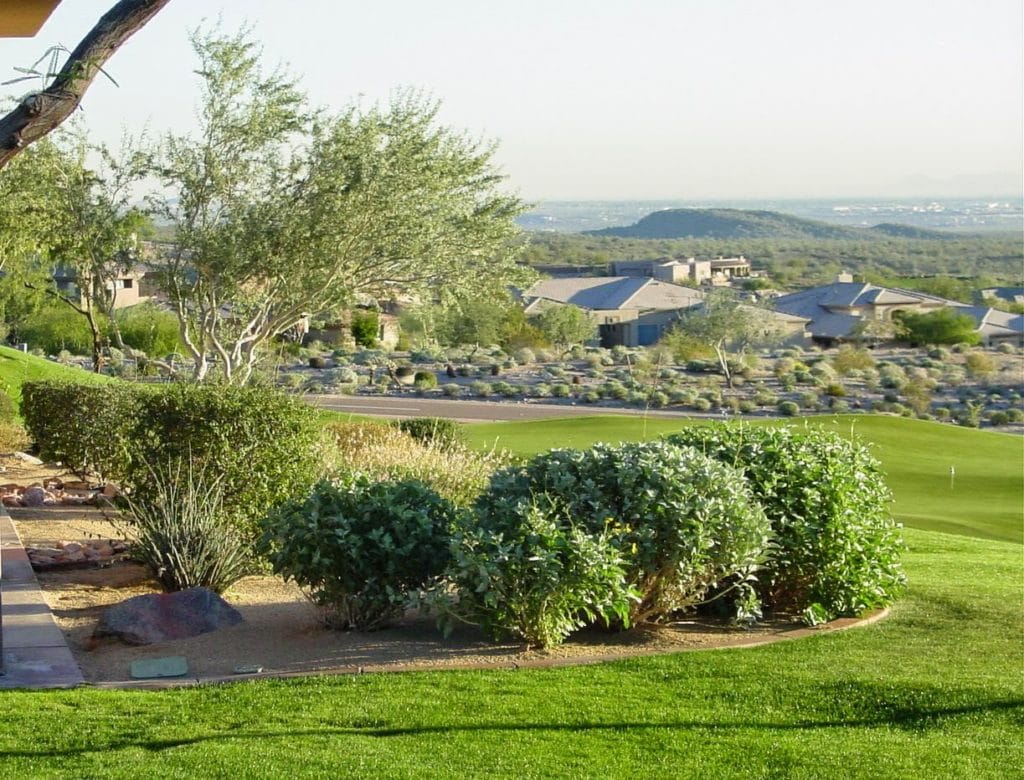
It’s been 8 years since I worked as a staff horticulturist for golf courses, but the past few weeks have found me spending a lot of time back on the golf course.
Earlier this week, I told you about my most recent project – creating landscape designs for up to 30 acres of former grass area. Two golf courses, that I have worked with in the past, are removing large areas of turf in favor of a more natural, desert-scape.
The plants that I have chosen are extremely drought-tolerant, need very little maintenance and are native to the deserts of North America.
Another important criteria for my choices of plants was that I have to had experience growing them myself, either in my own garden or professionally in landscape areas that I have managed.
Here are the plants that I am using in this first area:
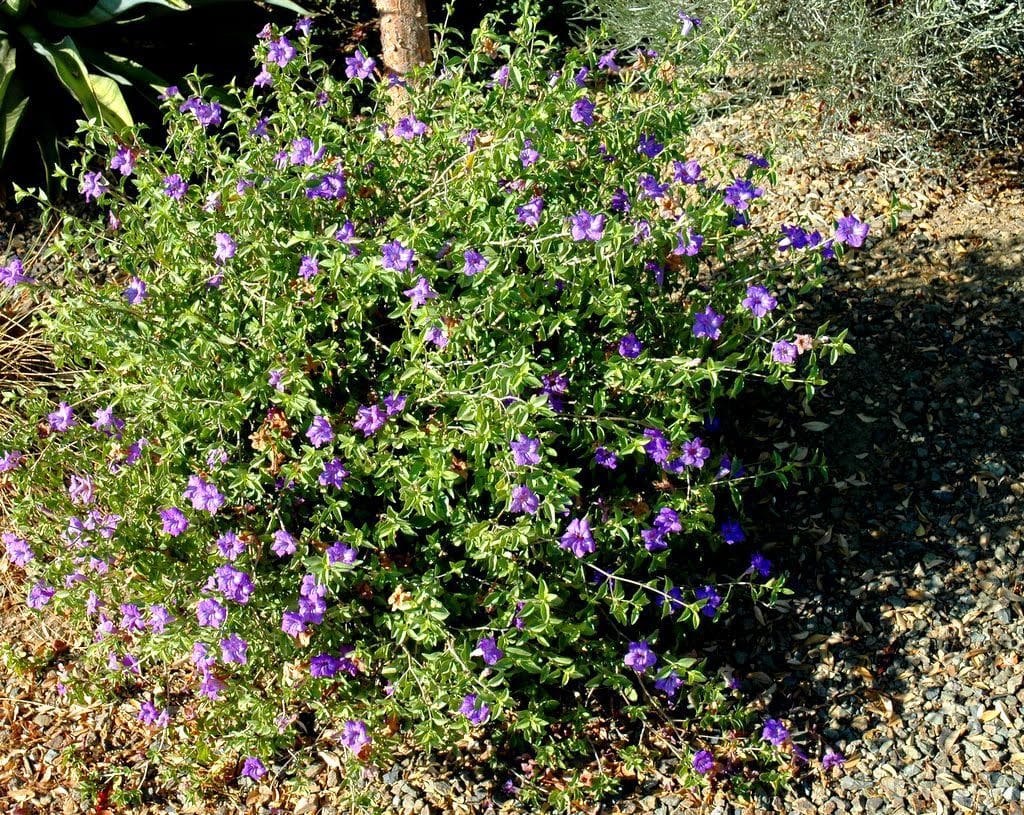
Desert Ruellia (Ruellia peninsularis)
Desert Ruellia is a favorite shrub of mine. It is incredibly drought-tolerant. I like to use it as a smaller substitute for Texas sage.
In this first landscape area, I wanted a shrub that could survive with intermittent deep-watering, limited maintenance while still looking attractive. The purple flowers that appear spring through fall will add color to the area.
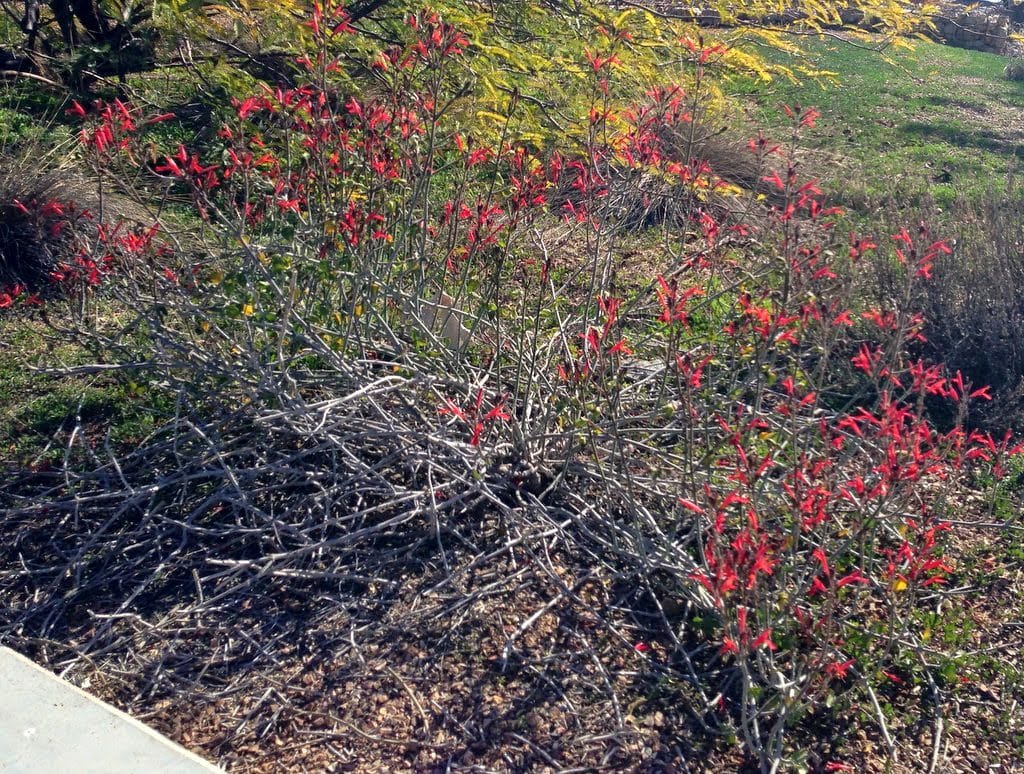
Chuparosa (Justicia californica)
This flowering native, will find a place underneath the filtered shade of the large mesquite tree already present.
Chuparosa explodes with color off an on throughout the year, attracting every hummingbird in the neighborhood. It does well in full sun or filtered shade.

Desert Spoon (Dasylirion wheeler)
Succulents are a vital part of the plant palette for all of these new areas. Their unique colors and shapes add texture to the landscape and contrast well with the more softly-shaped plants.
Desert spoon will be interspersed throughout this first area where its gray color will contrast with the darker greens of the shrubs.
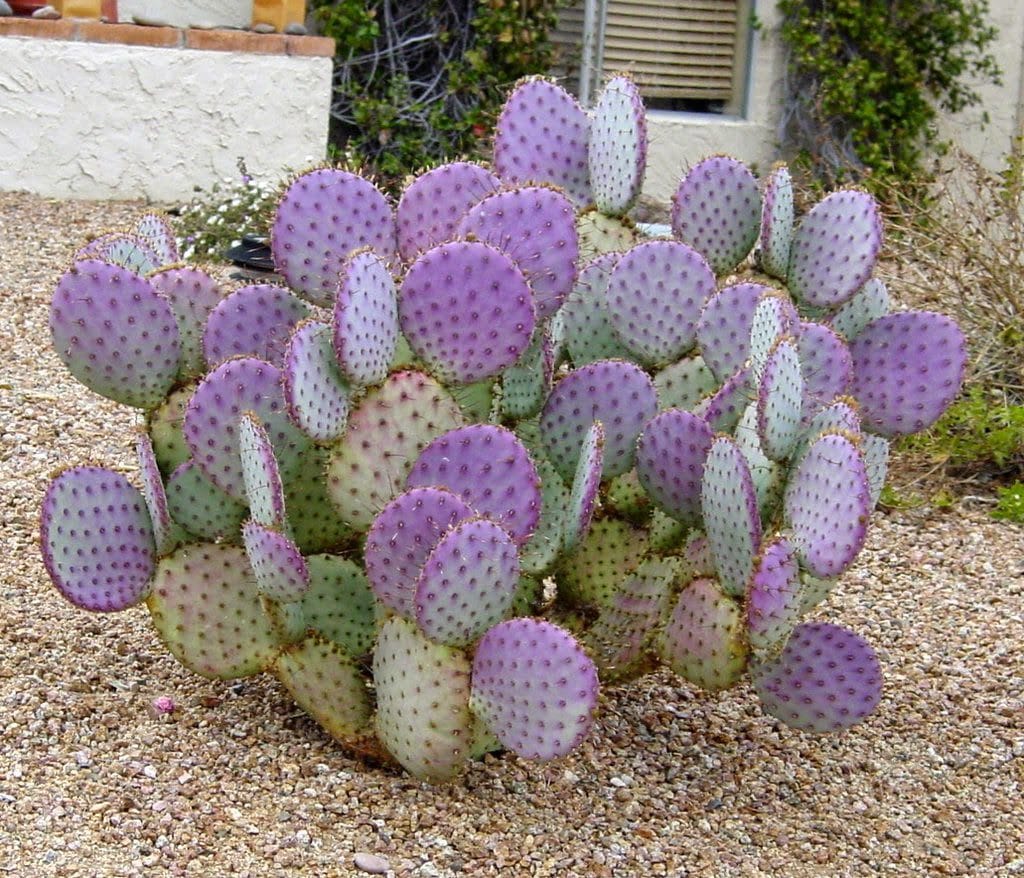
Santa-Rita Purple Prickly Pear (Opuntia santa-rita)
Santa-rita purple prickly pear is also high on my list of favorites. You just can’t beat the purple coloring that appears toward the tips of gray/blue pads.
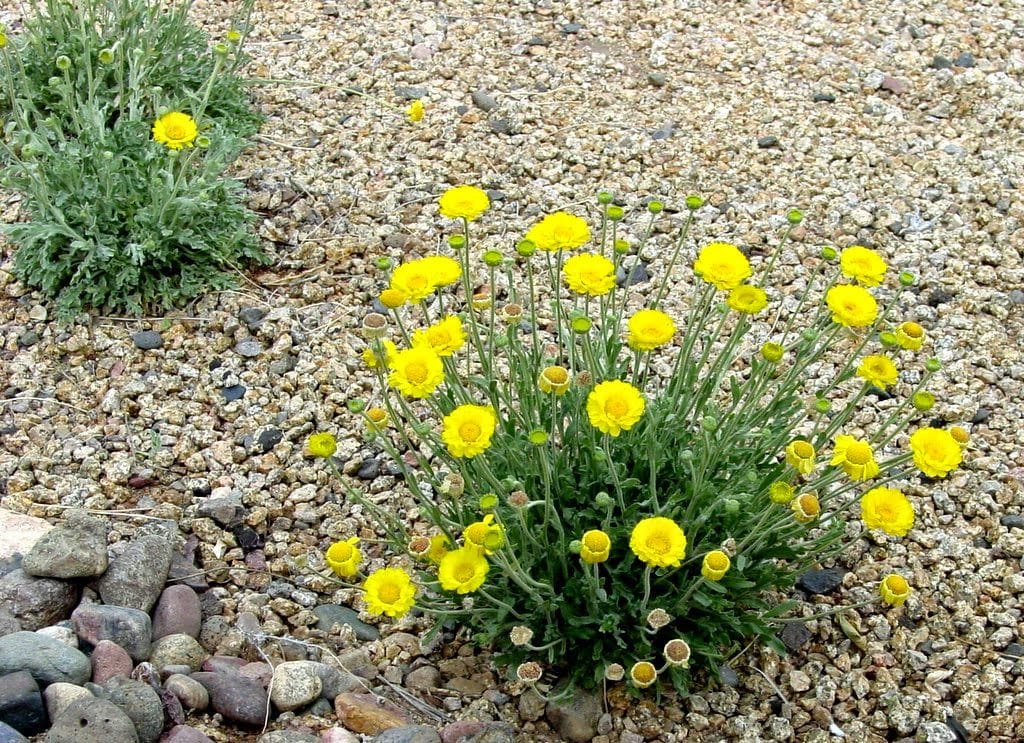
Desert Marigold (Baileya multiradiata)
Often grown as a annual, Desert Marigold is a short-lived perennial that flowers throughout the year.
Cold and lack of water don’t bother these tough little perennials. They require little to no maintenance – but I cut them back severely to 3 inches once a year to improve their appearance and promote more flowering, although you don’t have too.
Whether you or not you are a fan of yellow – it is an important color to include in the garden because the color yellow helps the other colors in the landscape to ‘pop’ and stand out more vividly.
Although short-lived, desert marigold self-seeds, ensuring that they remain a presence wherever they are planted.
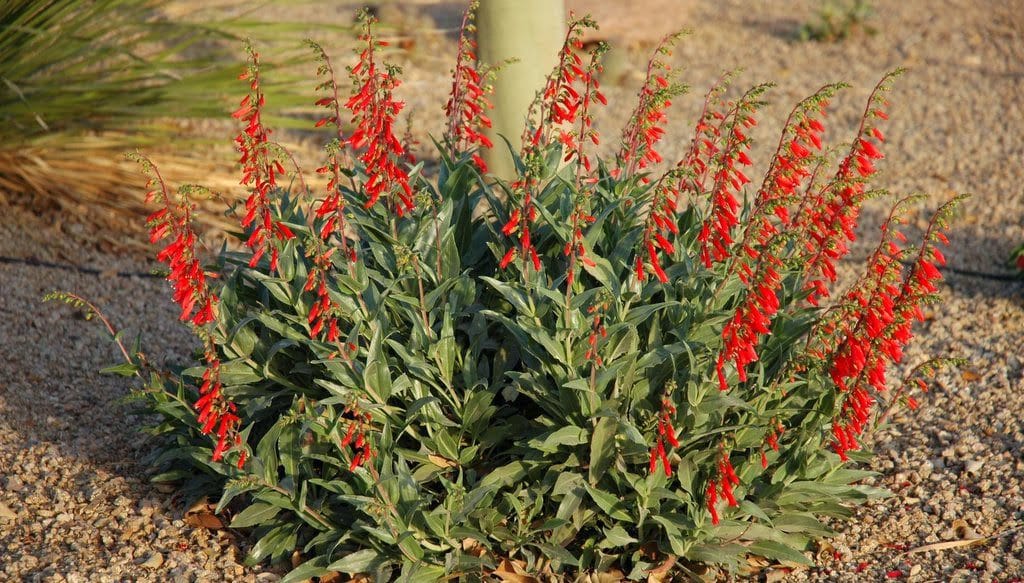
Firecracker Penstemon (Penstemon eatoni)
If you are a fan of penstemons, this is one to consider adding to your list. Firecracker penstemon has a long bloom period in the low-desert. It starts blooming in late December and continues into spring.
You can often prolong the bloom period by removing spent flowering stalks, which will promote a second flush of bloom. I have several of these growing in my own garden – some are 15 years old and still going strong – although that is uncommon.
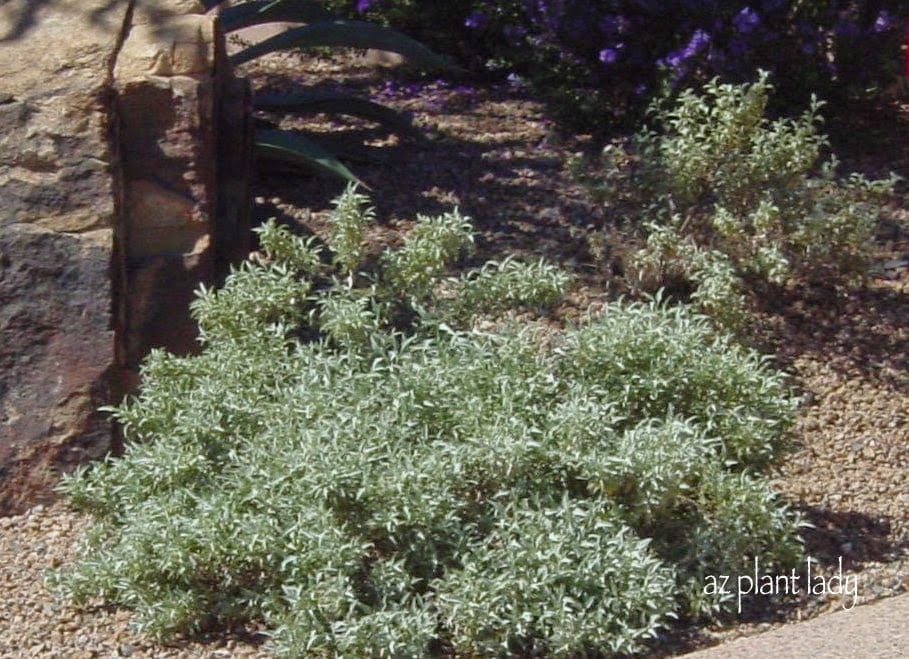
Bursage (Ambrosia deltoidea)
I’ll be the first one to admit that this low-growing shrub is not exciting – one may even call it ‘boring’.
But, bursage is seen carpeting the ground throughout the Arizona portion of the Sonoran desert. Its gray/green foliage serves as an understory plant that helps to tie the separate elements of this ‘natural landscape’ together.
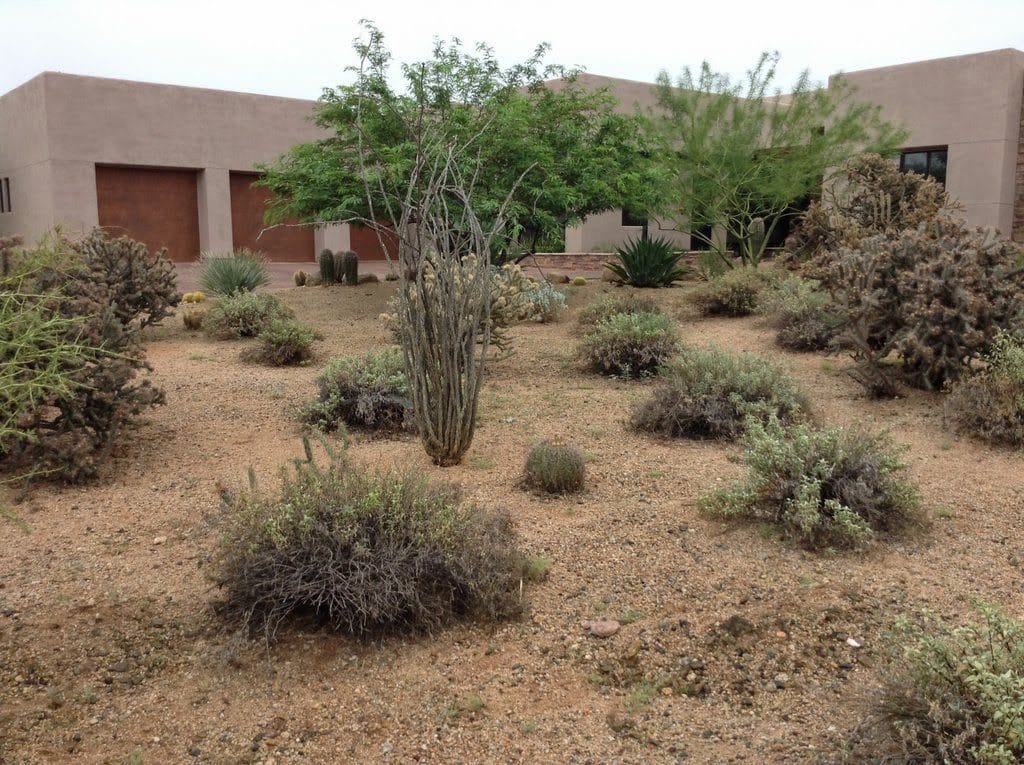
Example of bursage use in a natural desert landscape planting.
The key to keeping bursage attractive is to prune it back severely to 6″ tall and wide every 2 – 3 years in early spring.
So, this is the plant palette for the first of many ‘natural desert landscape areas’. I do have a few more plants that I will show you as I create designs for the other areas on the golf courses.
Do you grow any of these plants in your garden?








